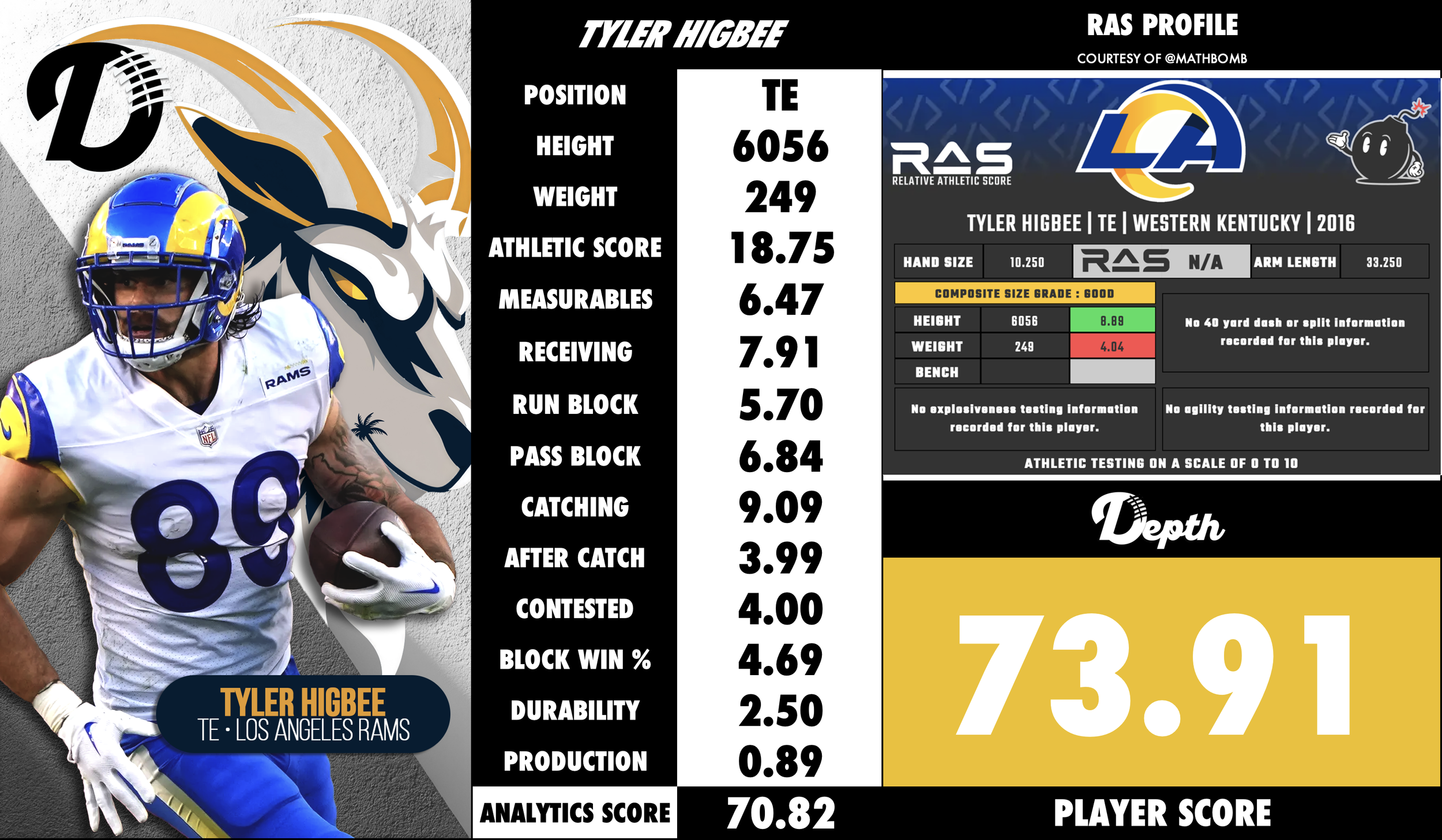
Tyler Higbee
Summary
Tyler Higbee was selected in Round 4 (#110 Overall) in the 2016 Draft out of Western Kentucky University. Higbee entered the NFL as a converted wide‑receiver turned tight end with excellent receiving chops—strong hands, body control, and a very high upside as a mismatch weapon in the passing game. His college tape at Western Kentucky showcased his ability to separate, make tough catches and gain yards after the catch—but also highlighted areas of his game that needed development, especially in run‑blocking, strength and full‑time TE fundamentals. Over his pro career, Higbee developed into a consistent contributor at tight end, primarily as a receiving weapon, which shaped his outlook and fit in the league.
Strengths
Strong receiving attributes: Higbee has very good hands, shows body awareness, and adjusts to off‑target throws.
Effective route‑running and separation potential: He displays the ability to run clean routes, show burst out of breaks and create mismatches (especially vs linebackers or safeties) in intermediate and seam zones. Bleacher Report
Yards‑after‑catch capability: Once the ball is in his hands he can generate additional yards thanks to his movement skills and physicality in the open field. NFL.com
Size and big‑body receiver profile: At ~6′5‑6′6″ with receiving WR background, he combines size with enough athleticism to threaten vertically and in contested‑catch situations.
High upside as a receiving weapon: Has potential to be more receiver than blocker, making him attractive for offenses that prioritize TE‑passing threats.
Weaknesses
Run‑blocking and in‑line blocking underdeveloped: Higbee’s background as a receiver meant his experience and technique as a blocker (especially in the trenches) were less refined. With the First Pick
Strength and mass for full‑time TE duties needing improvement: While he has size, scouts flagged the need for added functional strength and frame to handle physical TE blocking assignments consistently.
Frame and injury concerns: He had a knee injury late in his college career that limited his pre‑draft testing and raised durability questions and has had further knee issues in the pros.
Scheme and role sensitivity: His best value comes as a receiving tight end rather than a full‑time inline blocker; deploying him outside of that strength profile risks limiting his impact.
Athletic limitations vs elite blocking TEs: Against the very best defensive ends or when asked to maul in heavy run‑game schemes, some of his physical and technique limitations may be exposed. Bleacher Report
Fit & Outlook
Higbee fits best in an offense that values the tight end as a pass‑catching threat and mismatch weapon more than as an elite in‑line blocker. He thrives when aligned flexed out, in the slot or exploited in vertical seam and intermediate route concepts—especially in systems that use motion, leverage his receiving skills and create favorable match‑ups (e.g., putting linebackers or safeties on him). He is slightly less optimal in offenses that require the tight end to function primarily as a run‑blocker, inline blocker every down, or to be the main tight‐end who logs heavy snap counts in the run game without schematic support. Looking ahead, Higbee’s outlook is positive as long as his knees hold up. His floor is that of a valuable starting tight end who consistently contributes in the passing game, offers reliable hands, and gives an offense a mismatch weapon. His upside is meaningful: if he continues to refine his blocking technique and physical strength, he could evolve into one of the more complete tight ends — someone who can start, contribute in all phases, and be a key piece in multiple schemes. The primary risks revolve around how his blocking and physical demands are managed, how well he holds up injury‑wise, and whether he is deployed in a role aligned with his strengths rather than being burdened with full‑time blocking expectations.


